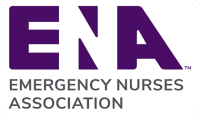While some patients have planned tracheal intubations as part of medical or surgical procedures, others are intubated during in-hospital codes or following some type of trauma that limits their ability to breathe on their own. With a tracheal intubation, a flexible tube is inserted down the throat and is placed far enough into the trachea to assist with regular breaths and oxygenation of the alveoli. A balloon on the outside of the tube is then inflated once it is in place to seal off the trachea and to keep the oxygen-rich air from leaking out of the lungs. During a code, this tube is usually attached to a self-inflating bag ventilator, also called an Ambu bag, which is supplied with oxygen. Following a successful code, the Ambu bag is removed and the endotracheal tube is connected to the ventilator.
Because many intubations are performed during lengthy or problematic codes, the process is fraught with stress. It can be difficult to perform such an invasive procedure with everything else going on in the room, and timing the insertion around chest compressions can be equally problematic. Therefore, it is vital that the practitioner, who may be a medical doctor, anesthesiologist or nurse anesthetist, has plenty of help during the procedure. As a nurse in the ER or ICU, it will frequently be your job to serve as right-hand assistant.
As a nurse, your primary job will be assisting with head and neck positioning of the patient, getting the correct supplies, ensuring a completely sterile field and giving medications to ensure that the patient does not move or feel pain during the procedure. Of course, you will probably not be able to do all of these tasks on your own and may get help from another nurse in the room or from a respiratory therapist who can help with head positioning or who can hold a strong light to help the practitioner see the patient’s throat.
The first step in tracheal intubation is giving the anesthetic. There are a variety of pain management and paralytic drugs that can be used, and the practitioner will give orders reflecting his preference and the amount to be given based on the patient’s gender and size. Once the patient is sedated, the practitioner will insert a laryngoscope into the patient’s throat to visualize the area. In particular, he must see the vocal cords before proceeding with the intubation. At this point, you may be called on to apply pressure to the larynx or Adam’s apple to assist with positioning. The practitioner will then place the endotracheal tube, and you will inflate the balloon with the correct amount of air before using your stethoscope to listen to the patient’s lungs. If you can hear the air exchange when the Ambu bag is deflated, you will know that the endotracheal tube is in the correct place.
A successful endotracheal intubation can mean the difference between life and death when it comes to an in-hospital code. Because the tube has direct access to the lungs and a proper seal, you can rest assured that your patient will have the ideal exchange of air, and you will be freed to focus more fully on compressions as well as on medications and defibrillation when needed.









